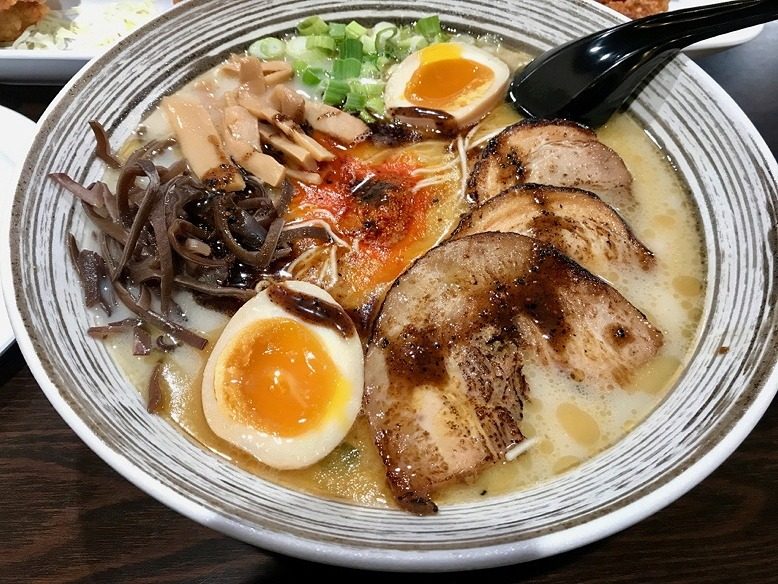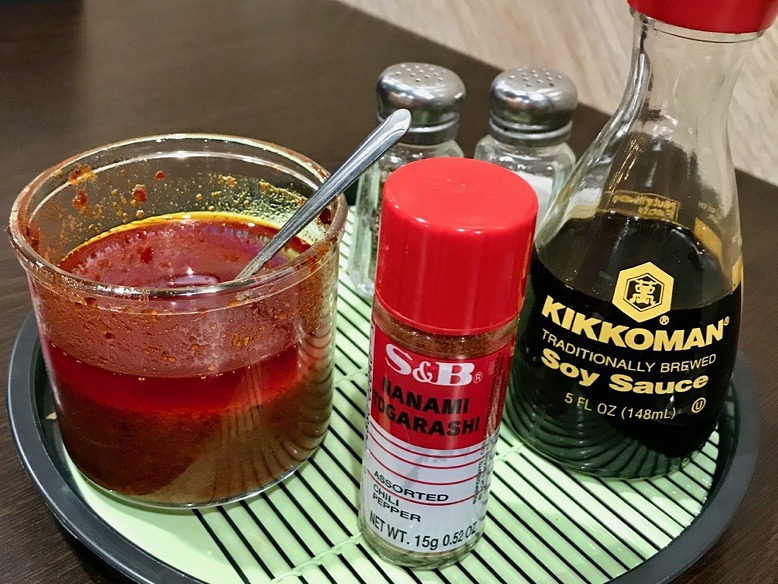
When the Mount Laurel location of Rai Rai Ramen opened this summer, it had a decidedly big ladle to fill. Broths simmering, it set up shop in the former strip-mall home of Chulicious. There, Sheri Chu and her father/chef, Chun J. Chu, had developed a cult following with regional Taiwanese and Sichuan classics, before the restaurant was briefly sold and then closed. In the dining room, the healing scent of Chu’s chicken soup had perfumed the air: pure comfort.
Fortunately, the talent behind Rai Rai Ramen understands the healing qualities of a well-crafted broth. (Is there anything more potent in times like these?) On a menu that puts one of Japan’s famous culinary exports in the spotlight, chef-owner Vincent Lin presents no less than 30 ramen offerings. This can be overwhelming, yes—but in the best way—and at the front of the house, bright and simply adorned in wood tones, manager/partner Don Cheng is all welcoming energy and easy smiles, ready to help you navigate.
Jersey diners with a taste for noodles will be familiar with Rai Rai Ramen. When its North Brunswick location reopened after a 2014 fire shuttered it for over a year, fans flooded its dining room with relief. In Mount Laurel, the menu is simpler and more focused, joining a trio of sister locations owned by the Lin brothers and partners. Sipping and slurping, one can reflect on the subtle tones that distinguish Japan’s regional ramen styles.
For a primer, head to the menu section simply dubbed “ramen.” This reveals the essential tare, or base flavors. Light on the palate, shio is popular in the coastal Hokkaido region, flavored gently with sea salt. Some say that it is most similar to the Chinese wheat noodle soup that inspired ramen sometime between the 17th and 20th centuries. (As NYU professor George Solt explains in his book, The Untold History of Ramen: How Political Crisis in Japan Spawned a Global Food Craze, it’s complicated. His take: Ramen was born in 1910 Tokyo, at a Japanese-owned Chinese restaurant.) Shoyu brings a splash more resonance, swapping Japanese soy sauce for the salt. Miso takes it a step deeper via fermented soy. Rounding out the quintet here is curry ramen, which will appeal to anyone enamored of Madras-scented Golden Curry mix.

House Ramen, gyoza, and Mochi Ko Chicken at Rai Rai Ramen in Mount Laurel. Photo by Jenn Hall
The menu is anchored by Lin’s 24-hour tonkatsu broth, focused in flavor and rich with pork. (Ribeye and wonton ramen use chicken.) Customers who have had ramen in places like New York City can immediately tell that the broth is homemade, Cheng says. “With ramen, the stock makes all of the difference.”
Which brings us to decision time. “Shoyu is popular,” Cheng notes, but his heart is with delicate shio. “Don’t let me steer you, he adds”—but perhaps, let him. We were set to start with wasabi shumai, but Cheng guided us to pork gyoza. “We make them in house,” he noted. Extra steps like these lead to a memorable meal. The gyoza evenly walk a tight line between crunch and tenderness, gone savory inside.
We also order a platter of mochi ko chicken, a nod to Rai Rai Ramen’s Hawaiian roots. The original location opened in the 90s in Kailua, Hawaii, from which the three Lin brothers hail, and is now owned by a family friend. The chicken achieves its homage honorably. Battered in Japanese sweet rice flour, it is all crisp edges, adorned with garlic-vinegar dipping sauce. “It’s really garlicky,” Cheng cautions. Bring it on.
There’s another nod to the Pacific by way of the noodles—a thinner variety than those used at the other Rai Rai Ramen locations. Rai Rai Ramen orders from Sun Noodle, which was also founded on Oahu and has a reputation for crafting premier noodles. “Sooner or later we are going to make our own,” Cheng says.
We settle on Akamaru Modern Ramen, a spicy number loaded with charsiu roasted pork, wood ear mushrooms, bamboo, mayo sauce, “special” hot sauce, and twin halves of a soy-mirin marinated egg. Akamaru is shio based, but Cheng explains that it is cooked down longer, concentrating flavors. The ramen is an exercise in balance: Luscious on the palate thanks to the mayo sauce; spicy, but not hot (rayu chili oil and nanami togarashi are on the table); concentrated, yes, but still elegant and clear.
Offering a shoyu counterpoint is the house ramen, deeper with soy flavor, and paired, somewhat whimsically, with a katsu-fried oyster that reminds you of Japan’s relationship to the water. This, however, is just a starting point. With so many permutations on the menu, plus katsu chicken and fried rice, we are already planning our return.
Rai Rai Ramen, 1200 South Church Street, Mount Laurel; 856-360-7142. Open for lunch and dinner, daily. BYO


